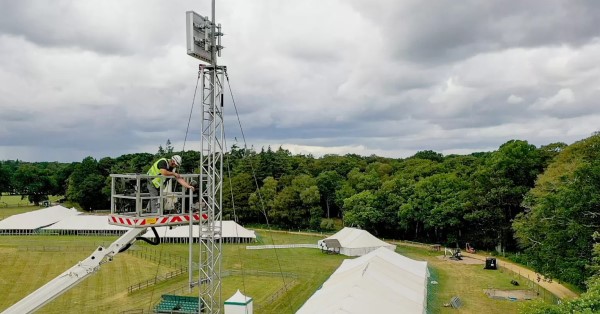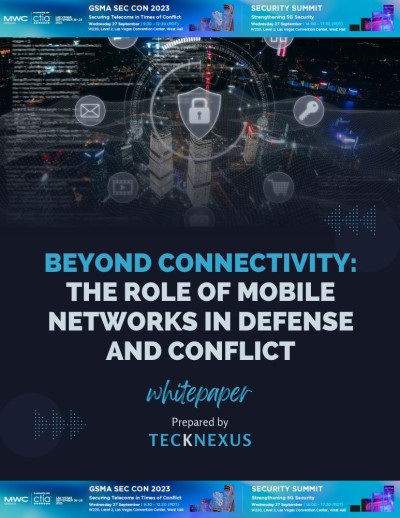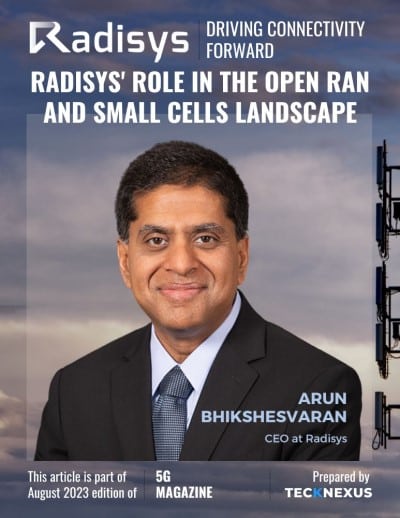Smart devices like wearables, phones, TVs, and that fancy fridge that keeps track of your groceries all make up a collaborative, interrelated network of web-enabled devices called the Internet of Things (or IoT). We’ve come to rely on this network to gather insights that make our lives easier and improve the ways we connect with each other.
As much as consumers rely on IoT, many industries rely on it, even more, to monitor processes, provide real-time analysis of quality, keep employees safe and maintain operational efficiency. This is the industrial Internet of Things (IIoT), and it’s becoming such a mission-critical technology that an underperforming or unreliable connection could have costly or catastrophic results. So how can industries ensure their connected devices are part of an ultra-fast, low-latency network?
We spoke to two leading tech experts who consult for Verizon, principal analyst Zeus Kerravala of ZK Research and principal analyst Bob O’Donnell of TECHnalysis Research, who share a belief that private 5G networks are a key component of reliable IIoT networks. Here’s what they have to say about IIoT, how industries are currently using private 5G networks to improve applications, and what businesses may want to consider when leveraging the Internet of Things.
Q. How does IIoT differ from IoT?
Kerravala: Prior to the last 10 years, industrial IoT was just IoT: connected devices from manufacturing equipment to facilities equipment like elevators. But in today’s world, everything is connected, like your smart refrigerator and your smart device. Those applications are the IoT but aren’t industrial in nature, so we have the distinction of IIoT to describe what I think of as historically connected devices. Eventually we won’t think of one versus the other, we will assume most devices are connected.
O’Donnell: That’s right. And it’s important to remember that there have been several older connectivity methods used in manufacturing and other industrial applications. In the past, industrial networks were all wired, which limited flexibility. A wired connection might be fine for assembly-line machinery, but it clearly doesn’t work for an autonomous robot. Then Wi-Fi was introduced, but that’s only as reliable as the enabled device’s proximity to the hot spot. Modern IIoT focuses on applying cellular connectivity to older and new machines to improve their function.
Q. Why is private 5G helpful to IIoT deployment?
Kerravala: If you have connected robots on an assembly line moving equipment or materials from one place to another, any network outage could result in the entire factory shutting down. Many industries use Wi-Fi for their wireless IIoT, but it can be flaky and be impacted by interference from other devices on the network. Private 5G, on the other hand, can allow you to create workflows that you know will run more smoothly in comparison. Private 5G provides a reliable and predictable level of connectivity.
For example, a steel manufacturing company in Pennsylvania rolled out private 5G to enhance their operations and limit downtime. In their scrapyard, crane operators rely on information transmitted via the network for instruction on where to sort scrap steel for melting. They’ve reduced unplanned downtime by 70% using one cellular access point, where their previous network required six Wi-Fi access points. When you have these industrial settings where a lot of mission-critical processes take place, 5G can deliver an important level of reliability and predictability.
O’Donnell: Wi-Fi doesn’t work in all situations. In big, cavernous manufacturing facilities or environments where work is performed both indoors and outdoors, Wi-Fi may not provide reliable connectivity. So people are moving to cellular connections for improved, more reliable coverage with a consistent quality of service. With private 5G, you get high speeds and low latency, but the consistency of that low latency is even more important because then you can accurately coordinate all your machines.
Q. What challenges are industries able to overcome with 5G-powered IIoT?
O’Donnell: A common one I’ve encountered is coverage. Think of ports, logistics centers or warehouses that have both indoor and outdoor demands for connectivity. Generally speaking, if there’s an outdoor situation, a cellular network is going to work better than Wi-Fi. And private 5G provides the coverage needed for new technology like automated guided vehicles that move pallets and real-time analytics to track vehicles and inventory.
Then there are venues and stadiums that can leverage private 5G for better performance to improve guest experiences. This could be anything from video and interactive displays to the amount of time it takes to process a transaction on a hand-held point-of-sale device.
Kerravala: I’ve talked with some airports that are experimenting with private 5G networks for opt-in accelerated access. That’s an ideal use case where you want the data transfer to be as close to instantaneous as possible. If someone walks through a scanner, the data needs to come back from the cloud before the person gets lost in the crowd. So you need a combination of speed and analytics to process a lot of data quickly.
O’Donnell: Private 5G can help address security issues, too. Wi-Fi tends to be open, but cellular networks require either a SIM or e-SIM to authenticate users on the network. That adds a core layer of security that’s not available on Wi-Fi.
Q. What should companies consider before moving to private 5G?
O’Donnell: Their physical requirements, for sure. Do you need coverage in areas where Wi-Fi isn’t cutting it? Secondly, security. Even for companies that don’t think they need to focus on security, the rise in cybercrime and increased attempts at disruption are becoming problematic for a lot of organizations, particularly in regulated industries or government and defense. Again, security is an advantage of private cellular networks over Wi-Fi because you need a SIM to be authenticated on the network.
Kerravala: That’s certainly true. Security should be top of mind, and companies should also consider who will set up and manage the private 5G network. Not all private 5G networks are the same. Some companies may have the ability to deploy their own infrastructure, but others will want to work with a knowledgeable provider to explore managed service offerings that may mitigate complexity.
A knowledgeable partner may be able to help you avoid unintended consequences too. Because, while there are a lot of interesting possibilities from an analytics perspective in merging your operational technology (OT) and information technology (IT) systems, there’s also risk involved. For example, when a major retailer was hacked in 2013, it actually occurred through an HVAC vendor system. You could look at that as an OT breach. It created a back door into stores’ A/C systems, which led to the point-of-sale network. Basically, you want a private network that’s well managed, has good communication between OT and IT, and has segmented technology and modern security in place so that if there is a breach, it can be contained.
O’Donnell: Lastly, companies should think about the applications they want to run on the network and what their computing requirements are.
Private 5G isn’t an end unto itself. It’s really a means to an end, with the ultimate goal being the efficiency of the organization or being able to analyze data quickly and accurately. So think of where you want to go in terms of operations, and see how private 5G can help you get there.
See what Verizon 5G can do for you.
Verizon News Feed Read More























































